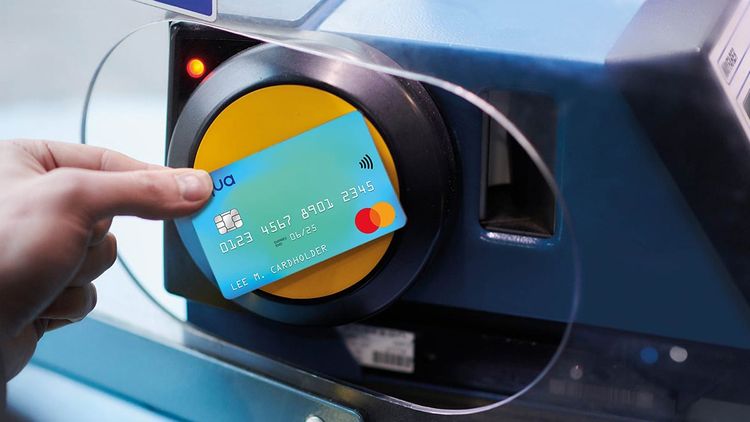In this article
Can you set up a direct debit on a credit card?
Wondering if you can set up a direct debit on a credit card? Learn how direct debits work with credit cards and the best way to manage your credit card payments.

There’s a lot of confusion as to whether you can set up a direct debit on a credit card, but it’s usually not possible. Unlike debit cards, a credit card is not designed to transfer funds from one bank account to another.
That said, there are other payment options available, such as a continuous payment authority (CPA). Or you can also set up a direct debit to pay your credit card balance.
Let’s look at all your options in detail with guidance on how each payment method works, how to set one up, and why it can help with money management.
Can you pay by direct debit with a credit card?
In the UK, a direct debit payment can only be taken from a current account and not from a credit card.
With a direct debit, the account holder has authorised the payee to pull funds from the account on specific dates. A credit card serves a different purpose in that purchases are made with the lender’s money, with an agreement to be repaid on a set schedule.
Like many others, you might have tried setting up a direct debit with a credit card to pay utility bills, subscriptions, or gym membership. Although it’s not possible, there are other options to help you stay on top of payments, such as a continuous payment authority (CPA).
With a CPA, a merchant has your authorisation to take payments either by debit or credit card. Not only does it free you from remembering payment dates, but it also means you’re less likely to incur late fees which could make it harder to obtain future credit.
You should also carefully consider whether a CPA is right for you, and not simply used to pay subscriptions or non-essential bills beyond your financial control.
Can you use a direct debit to pay your credit card balance?
It’s easy to set up a direct debit to pay your credit card balance. If you’re an Aqua customer, simply visit the Direct Debit tab in your mobile app or online account manager and follow the on-screen instructions.
Depending on your lender, there’s usually a choice of three repayment options when setting up a direct debit, including fixed amount, minimum payment, and full statement balance.
With whichever option you choose, you’ll have the financial flexibility to change it from one month to the next. So, if you typically make a minimum payment but tend to have spare funds available each month, you might decide to increase your payment amount.
Although each option offers a layer of protection for missing payments, getting in the habit of making minimum payments or small fixed amounts could lead to paying more interest and negatively impacting your credit score.
For that reason, you should pay off what you borrow as soon as financially possible. Not only does it demonstrate to lenders a consistent and responsible repayment behaviour, but it also could help to build and maintain your credit score.
To check whether your repayments are working towards clearing your balance or simply paying off interest, you should review your monthly statement which will break down and explain credit card payments.
Benefits of setting up a credit card direct debit
Setting up a direct debit to pay off your credit card balance not only helps you stay in control of repayments but also could go a long way to building and maintaining your credit score.
With each direct debit payment, you’re adding a layer of protection against the possibility of late fees and paying more interest on what you borrow – both of which potentially make it harder to get out of debt.
What’s also important to remember is a direct debit doesn’t have to clear your entire credit card balance each month. Instead, it can be a set amount that works with your finances which you can adjust as your financial situation changes.
Depending on your lender, setting up a direct debit is usually straightforward. If you’re an Aqua customer, you can set things up in just a few steps through your Aqua app or online account manager.
For more information about how to set up a direct debit to pay off your credit card balance, visit Managing your card FAQs.
How to set up or change a direct debit for your credit card?
When you set up a direct debit, you’re permitting a bank or building society to pay an organisation a pre-set amount of money from your chosen current account each month.
After you’ve set up a direct debit, it’s important not to simply forget what you’re paying. Instead, you should get in the habit of regularly checking your bank statements to monitor your finances.
If you’re an Aqua customer, here’s how to set up a direct debit:
1. Log in to your Aqua account via the Aqua app or online account manager.
2. Set a monthly amount which could be the full balance, minimum payment, or a specific amount.
3. Confirm your bank details by entering the account number and sort code from your chosen account.
4. Submit and wait for confirmation, which is usually received as soon as a request is submitted.
If you want to cancel your direct debit or change the amount you pay each month, log in to your Aqua app or online account manager, find the Direct Debit section, and follow the on-screen instructions. You can also change your payment due date up to three times a year, letting your Aqua card work around you.
Any changes to payment amounts can take up to 6 working days to action, so it’s wise to check everything has gone through a few days before your payment due date. If you need further guidance, get in touch or browse our account FAQs.
Although you can’t set up a direct debit using your credit card, you can set up a direct debit to pay off your credit card balance. With an Aqua credit card, you’ll have a range of repayment options, including direct debit, as well as access to Aqua Coach – our free credit-building tool designed to help Aqua customers get better at credit management.
Representative 39.9% APR (variable) on Aqua Classic
Check your eligibility (without impacting your credit score)
Failure to make payments on time or to stay within your credit limit means that you will pay additional charges and may make obtaining credit in the future more expensive and difficult.
Contributors

Hayley Bevan
Hayley is an editor at Aqua.

Victoria Smith
Victoria is an editor at Aqua.
You might also like
Slide 1 of 3
What is a credit card and how do they work? -...
Discover the basics of credit cards, how to use them, and the benefits of using credit cards in our comprehensive g...
Hayley Bevan

Advantages of using a credit card
From spreading costs to building credit history, learn the benefits of credit cards when used responsibly.
Vanessa Stewart

How credit card payments work
Learn how credit card payments work, how and why credit card charges are applied and how to manage payments.
Victoria Smith
The smart way to build better credit
Aqua is the credit card that gives you the power to improve your credit score
